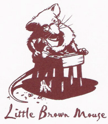CONSERVATION:
‘Conservation is all actions aimed at the safeguarding of cultural property for the future, including interpretation’ United Kingdom Institute for Conservation (1996)
RESTORATION:
‘Any intervention to compensate for loss should be clearly documented. It should be detectable by common examination methods. Such restoration should aim to be reversible and should not modify the aesthetic and physical characteristics of the cultural property unless for clearly defined over-riding structural or physical reasons and with consent of the client. ’United Kingdom Institute for Conservation (1996)
‘It is unethical to conceal or modify the true nature of an object through restoration.’ United Kingdom Institute for Conservation (1983)
‘Restoration is action undertaken to make a deteriorated artefact understandable, with minimal sacrifice to aesthetic and historic integrity.’
International Council of Museums (1984)
Little Brown Mouse works to ethical conservation/restoration standards, in close consultation with the client, to ensure that work is carried to the best interests of both the item and the client’s brief.
Much is made today of the terms conservation and restoration and the distinction between them. The Conservators purpose is to stabilise an object and prevent further deterioration whilst to restore embraces the conservation element as well as involving other aspects such as replacing missing parts and retouching. One question, which occupies many people, is whether the restoration of an object detracts from its value. While it is true that over restoration can certainly reduce the value of an object there is no doubt that sympathetic work can at the very least make it more aesthetically pleasing.
‘Conservation is all actions aimed at the safeguarding of cultural property for the future, including interpretation’ United Kingdom Institute for Conservation (1996)
RESTORATION:
‘Any intervention to compensate for loss should be clearly documented. It should be detectable by common examination methods. Such restoration should aim to be reversible and should not modify the aesthetic and physical characteristics of the cultural property unless for clearly defined over-riding structural or physical reasons and with consent of the client. ’United Kingdom Institute for Conservation (1996)
‘It is unethical to conceal or modify the true nature of an object through restoration.’ United Kingdom Institute for Conservation (1983)
‘Restoration is action undertaken to make a deteriorated artefact understandable, with minimal sacrifice to aesthetic and historic integrity.’
International Council of Museums (1984)
Little Brown Mouse works to ethical conservation/restoration standards, in close consultation with the client, to ensure that work is carried to the best interests of both the item and the client’s brief.
Much is made today of the terms conservation and restoration and the distinction between them. The Conservators purpose is to stabilise an object and prevent further deterioration whilst to restore embraces the conservation element as well as involving other aspects such as replacing missing parts and retouching. One question, which occupies many people, is whether the restoration of an object detracts from its value. While it is true that over restoration can certainly reduce the value of an object there is no doubt that sympathetic work can at the very least make it more aesthetically pleasing.


